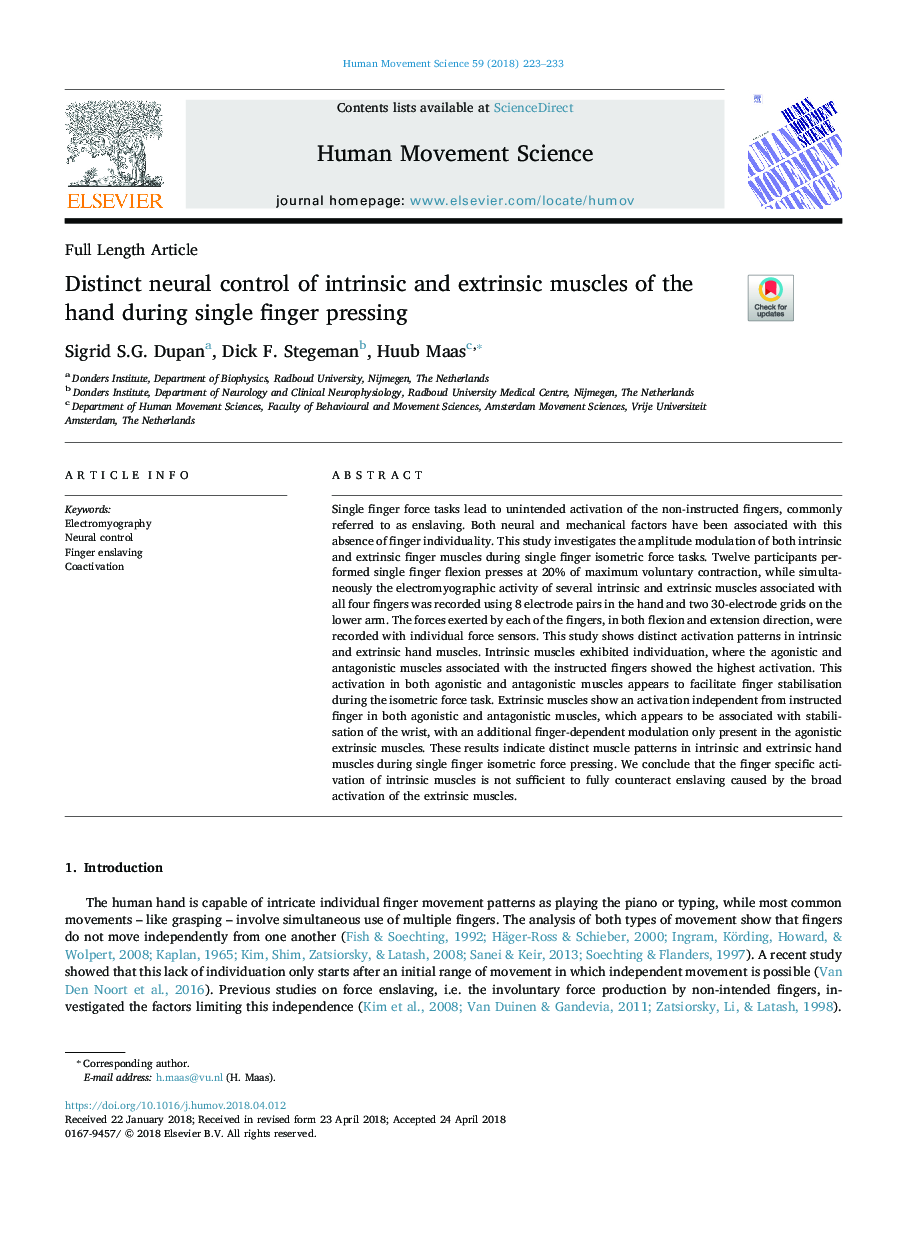| کد مقاله | کد نشریه | سال انتشار | مقاله انگلیسی | نسخه تمام متن |
|---|---|---|---|---|
| 7290912 | 1474205 | 2018 | 11 صفحه PDF | دانلود رایگان |
عنوان انگلیسی مقاله ISI
Distinct neural control of intrinsic and extrinsic muscles of the hand during single finger pressing
ترجمه فارسی عنوان
کنترل عصبی مشخصی از عضلات درون و بیرونی دست در هنگام فشار دادن انگشت تک
دانلود مقاله + سفارش ترجمه
دانلود مقاله ISI انگلیسی
رایگان برای ایرانیان
موضوعات مرتبط
علوم زیستی و بیوفناوری
علم عصب شناسی
علوم اعصاب شناختی
چکیده انگلیسی
Single finger force tasks lead to unintended activation of the non-instructed fingers, commonly referred to as enslaving. Both neural and mechanical factors have been associated with this absence of finger individuality. This study investigates the amplitude modulation of both intrinsic and extrinsic finger muscles during single finger isometric force tasks. Twelve participants performed single finger flexion presses at 20% of maximum voluntary contraction, while simultaneously the electromyographic activity of several intrinsic and extrinsic muscles associated with all four fingers was recorded using 8 electrode pairs in the hand and two 30-electrode grids on the lower arm. The forces exerted by each of the fingers, in both flexion and extension direction, were recorded with individual force sensors. This study shows distinct activation patterns in intrinsic and extrinsic hand muscles. Intrinsic muscles exhibited individuation, where the agonistic and antagonistic muscles associated with the instructed fingers showed the highest activation. This activation in both agonistic and antagonistic muscles appears to facilitate finger stabilisation during the isometric force task. Extrinsic muscles show an activation independent from instructed finger in both agonistic and antagonistic muscles, which appears to be associated with stabilisation of the wrist, with an additional finger-dependent modulation only present in the agonistic extrinsic muscles. These results indicate distinct muscle patterns in intrinsic and extrinsic hand muscles during single finger isometric force pressing. We conclude that the finger specific activation of intrinsic muscles is not sufficient to fully counteract enslaving caused by the broad activation of the extrinsic muscles.
ناشر
Database: Elsevier - ScienceDirect (ساینس دایرکت)
Journal: Human Movement Science - Volume 59, June 2018, Pages 223-233
Journal: Human Movement Science - Volume 59, June 2018, Pages 223-233
نویسندگان
Sigrid S.G. Dupan, Dick F. Stegeman, Huub Maas,
